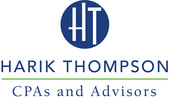|
The COVID-19 pandemic disrupted life as we knew it. We are still in the midst of finding our way to a new normal, but it is not clear how long that will take or what it will look like. Some things are becoming clearer, however, and one of those things is that blockchain technology and cryptocurrency are growing in popularity. For example, Bitcoin, a kind of cryptocurrency, is often in the headlines as its value goes up and down. Many still believe cryptocurrency is a fad, but the fact that Congress is considering legislation affecting it runs counter to that thought. This year alone, Congress introduced 19 bills that impact blockchain and cryptocurrency. The proposals range from the Blockchain Promotion Act of 2021, which seeks to define and promote blockchain, to the U.S. Virtual Currency Market and Regulatory Competitiveness Act of 2021, which seeks to make the U.S. competitive in cryptocurrencies on the global market.
There is good reason for the level of attention that blockchains and cryptocurrency are attracting: While they are something of a novelty today, there are many ways industries are envisioning how they can be used in the future. Health care and financial services are two industries that are carefully watching how these technologies evolve. As with most new innovations, wide acceptance takes time. Nevertheless, it is important to understand some of the basics. Here is a brief overview of some facts. Four types of blockchain Blockchain is a special type of database shared among a network and is essential to keeping track of virtual currency transactions. There are four major types of blockchain: 1. Public blockchains. Public blockchains are open, decentralized networks of computers accessible to anyone wanting to request or validate a transaction. 2. Private blockchains. Private blockchains have access restrictions and usually are governed by one entity. Only people who have permission from the system administrator can join. 3. Hybrid blockchains or consortiums. Hybrid blockchains or consortiums have both centralized and decentralized features. 4. Sidechains. Sidechains are blockchains that run parallel to the main chain. They allow users to move digital assets between two different blockchains. Important features The most important feature of these technologies is their ability to address these key, interrelated issues:
Two ways to prove that a transaction is valid Public blockchains use consensus mechanisms to validate transactions. Two common ways to validate transactions in a blockchain's decentralized system are proof of work and proof of stake. At their most basic, PoW and PoS can be described this way:
Pros and cons Blockchain has pros and cons. The pros are that blockchains have increased transparency and transactions can be accurately tracked at a low cost. The cons concern the unknowns surrounding blockchain technology, such as what the laws governing it will look like, how it will be taxed and how those laws will be implemented. Scalability is another concern. The system's ability or inability to handle a growing number of transactions can affect its growth. Finally, concern about the effect of mining on the environment is impacting the industry. This is another area in which the industry needs to evolve. Blockchain and cryptocurrency are still at a relatively early stage of becoming mainstream. Still, their journey has been compared to that of the internet in the late 1990s. It does not seem as if the technology is going away, and business owners need to stay abreast of the way the technology is progressing. Comments are closed.
|
Newsletter articles are posted every 2 weeks. If you would like to have our e-newsletter delivered directly to your inbox, please sign up. Your information is confidential; you can unsubscribe at any time. Subscribe. Categories
All
|
Proudly powered by Weebly

 RSS Feed
RSS Feed